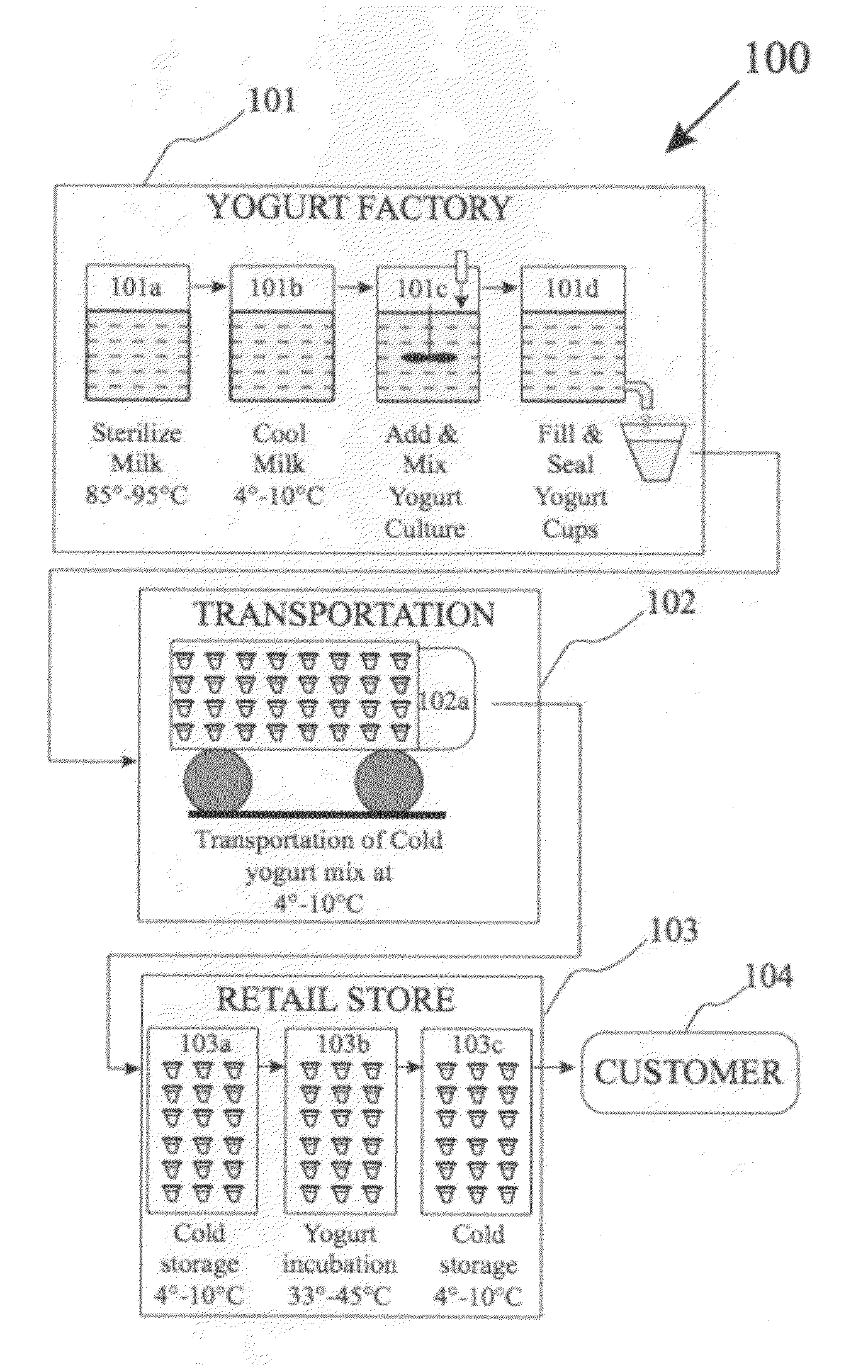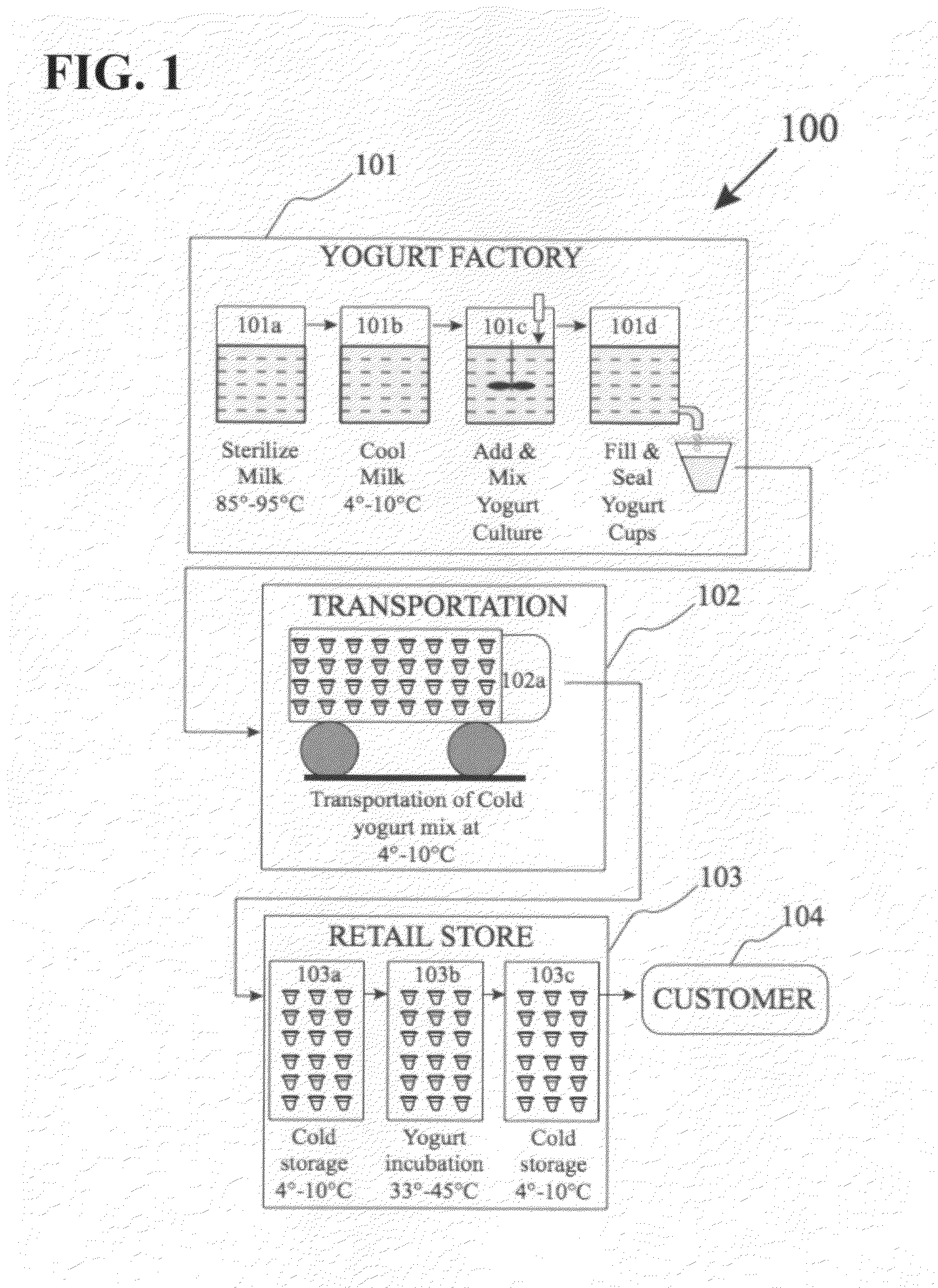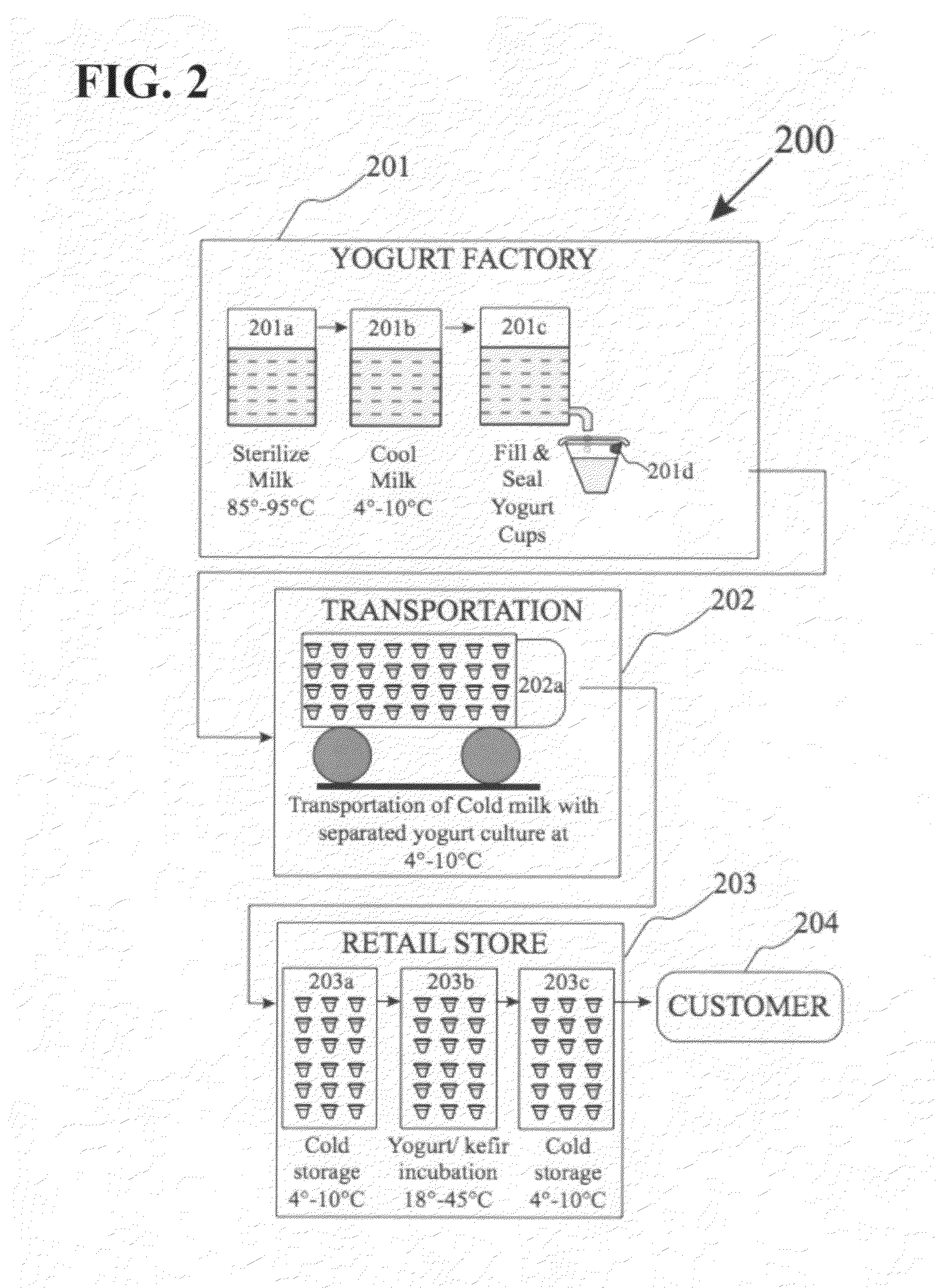Process and system for delivering fresh yogurt or kefir
a technology of fresh cultured yogurt and kefir, which is applied in the field of yogurt manufacturing and distribution, can solve the problems of insufficient growth of the cultures incorporated in the kefir leaven (yeast) and the end product stored in the refrigerator, and achieves the effect of excellent texture and fresh tas
- Summary
- Abstract
- Description
- Claims
- Application Information
AI Technical Summary
Benefits of technology
Problems solved by technology
Method used
Image
Examples
second embodiment
[0059]Briefly stated, the invention for producing fresh yogurt or kefir generally comprises the steps of: (i) sterilizing milk at a temperature in the range of 85° C. to 95° C. to kill all yeast present and to denature the protein structure of the milk suitable for culturing yogurt of kefir if sterilized milk is unavailable; (ii) cooling the milk to a low temperature in the range of 4° C. to 10° C.; (iii) filling and sealing the cooled milk in a sterile yogurt container with a lid having a separate compartment that contains yogurt of kefir culture kept away from the cold milk; (iv) transporting the yogurt containers with cold milk with separated yogurt or kefir culture to the retail store location and storing said containers at a temperature range of 4° C. to 10° C. for a time period up to 30 days; (v) removing the cold containers as needed from cold storage, shaking the contents to distribute the yogurt or kefir culture into the cold milk and heating the container in an oven to a t...
first embodiment
[0061]FIG. 1 illustrates the flow chart of the process of the fresh yogurt, shown generally at 100. The yogurt manufacturing factory is shown at 101. Step 101a sterilizes the milk received to kill all the yeast contamination, which can produce sour taste and gassy yogurt. This sterilization step generally requires a temperature in the range of 85° C. to 95° C. If sterilized milk is available this step may be omitted. In step 101b, the sterilized milk is cooled to 4° C. to 10° C. In step 101c, the yogurt culture of Streptococcus thermophilus and Lactobacillus bulgaricus which has very little growth rate at 4° C. to 10° C. temperature range is mixed into the milk. In step 101d, the yogurt mixture containing yogurt culture is fed to individual yogurt cups and sealed in the yogurt factory. This sealed containers of yogurt mixture when incubated at the retail store location produces a ‘Grade A’ certified yogurt, since the yogurt containers have never been opened. The filled sealed yogurt...
PUM
 Login to View More
Login to View More Abstract
Description
Claims
Application Information
 Login to View More
Login to View More - R&D
- Intellectual Property
- Life Sciences
- Materials
- Tech Scout
- Unparalleled Data Quality
- Higher Quality Content
- 60% Fewer Hallucinations
Browse by: Latest US Patents, China's latest patents, Technical Efficacy Thesaurus, Application Domain, Technology Topic, Popular Technical Reports.
© 2025 PatSnap. All rights reserved.Legal|Privacy policy|Modern Slavery Act Transparency Statement|Sitemap|About US| Contact US: help@patsnap.com



